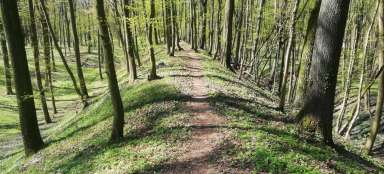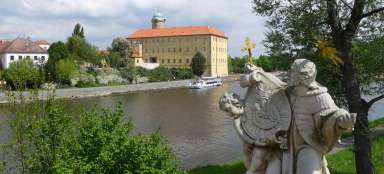How to start a fire in the wilderness
What about traveler's diarrhea

In the last article, we gave some basic information about fire and its preparation. Now let's look at how to actually start the fire itself. There are many ways to start a fire. We will take a closer look at some of the procedures in this article.
Ways of making a fire
In general, I could divide the creation of fire into several categories according to how we light the fire: – ** DIRECT FLAME, SPARKS **: matches, lighter, flint, steel + stone … – ** FRICTION WOOD **: by hand, using bow, bamboo fire saw … – ** LENS **: magnifier, glasses, using water in a PET bottle, condom, plastic bag, light bulb … – ** ELECTRICAL SOURCE **: all kinds of batteries … – * * CHEMICAL REACTION **: hypermanganese, charge, cartridge …
DIRECT FIRE, SPARKS
- ** Lighter, matches **: If you have a lighter or matches, you have won. It is also good to keep in mind that a lighter or match will not always work. It is good to have a lighter somewhere near the body (the inner pocket of the jacket), because it stops working in the cold (do not throw away an empty lighter, because the spark from being struck by the lighter is enough to ignite the oven). Matches can get wet and you won't light anything with them anymore. You can apply a layer of wax to the match heads, which protects them from moisture. Before use, just scrape a layer of wax from the match head. – ** Flint **: If you find a flint in your equipment, you don't have to worry about moisture and frost. The flint works in all circumstances. All you need to do is find a suitable trunk that will help you ignite the flame from a spark that has up to 3000 degrees Celsius. – ** Stone **: Another way is to have a steel „thing“ with you and find a suitable stone. Here it starts to get a little more complicated, because you don't always manage to actually start a fire. A steel object can be a steel carabiner, a piece of saw blade, or a hard metal product (preferably with a rough surface). We can also argue about a suitable stone. I don't know much about stones, but quartz works, for example. However, you can see for yourself the suitability of the stone by starting to cut the steel against the stone, and when you see sparks flying away, that's it (you can also draw the spark with two quartzes). Then all you have to do is „just“ catch the spark in the oven and gently start blowing out the hot spot. I recommend keeping calm and especially patience for this procedure (sparks are really very small and do not have such a temperature as a flint, however, it works …).
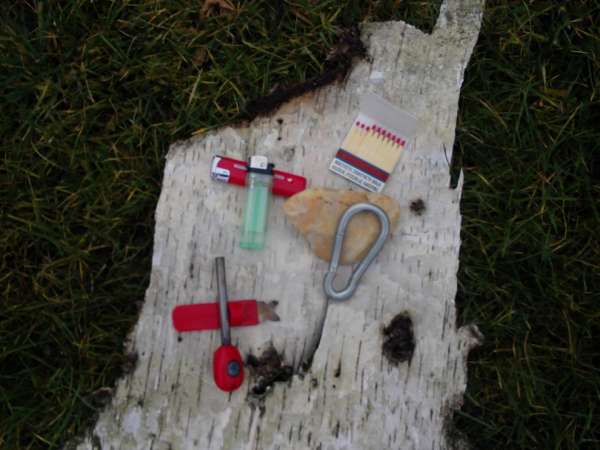
FRICTION WOOD
Friction generates heat. We could hear this phrase at the very beginning in physics lessons. That is indeed the case. By rubbing wood against wood, we can generate such heat that is rich enough for us to light a fire. When spreading fire by rubbing wood, prepare a lot of patience and strong nerves. Once you learn the right grif, you have half won. Creating hot coals will then be a matter of a few minutes. It's all about skill and practice. . – ** Drill and fire board **: Of course, we choose the driest possible wood. A set for making a fire with this technique should include a wooden drill (a straight dry stick that you get rid of all the side twigs) and a fire board (a wooden pad that you will rub against with a wooden drill). In general, I can say that a wooden drill should be made of harder wood than a fire board. The wood hardness test can be easily verified. It is easier to dig our fingernail into the soft wood and a clearly visible imprint remains on it. We don't just make our fingerprint imprint on hard wood (if we do, we have to make it with much more pressure). In our regions, the combination Divizna (drill) + Lípa (fire board) or Černý Bez (drill) + Spruce (fire board) has worked for me. In the jungle, I tried Açaí (drill) + Babassu (fire board) and it was quite a „flight“. Not only is everything damp and wet, but also the high temperature and humidity have deprived me of my strength and patience. However, after about 45 minutes of constantly pulling the bow here and there, I still managed to do it. If you have found a suitable wood for both the drill and the fire board, what next? – ** Friction of wood **: Make a hole in the fire board with a knife (determine the size according to the diameter of the drill) and turn the drill a few times in this hole (cut the edges of the drill a little, but do not make a tip there). The dimple is then shaped into a better shape. Then we cut a „V“ -shaped groove at the hole with a knife so that we have somewhere where the drilled material falls off and the air supply is ensured. We put the drill between our palms and we start to „drill“ into the fire board with the opposite movements of the hands with a slight pressure on the drill downwards. After some time of „drilling“, smoke begins to smoke from the drill and hot carbon begins to form in the groove, which is then transferred to the oven and blown out. Well, it sounds simple, but the reality is a little different. The first fire I started in this way gave me a lot of work. Either I had the wrong choice of wood (not every type of wood is suitable) or I had little patience. – ** Bow **: We can also make the rubbing of wood easier by creating a bow (a piece of fresh branch and, for example, shoelaces). We wrap the bowstring around the drill and the movements from each other and we begin to „drill“ into the board of fire with the simultaneous pressure on the drill (using, for example, a stone with a depression). Lots of videos can be found on the internet. – ** Groove **: Another way is not very different from a drill and a fire board. The only difference is that we do not turn the drill in the hole, but run over the entire length of the fire board. Here, with this variant, we have to make a groove in the fire board, in which we will „slide“ the drill back and forth (we apply a slight downward pressure on the drill). At the end of the groove, hot carbon is formed over time. If you can't even cause smoke, try replacing either the drill or the fire board with another type of wood (not all wood „communicates“ with each other). – ** Bamboo saw **: Another way to start a fire is with a bamboo fire saw. If you are moving in places where bamboo is abundant, you can try to start a fire with a bamboo fire saw. First of all, we have to find dry bamboo (ideally with a diameter of 8 cm and above and about a meter long). From the outside of the bamboo, grate fine shavings with a knife (the more, the better). Then we halve it lengthwise with a knife or machete. In the first half of the bamboo, we remove the partitions to create a kind of semicircular „trough“. In the second half of the bamboo (probably in the middle) we will create a transverse notch on the outside, through the width of the bamboo wall, which will „fit“ the edge of the bamboo from the first (hollowed out) half (a small notch hole must be visible from the inside). Then we place the grated bamboo shavings on the transverse notch (insert inside the bamboo) and start sliding the outer side of the bamboo (with the notch) on the edge of the carved half of the bamboo (deny it on a tree trunk or thigh at an angle of about 45 degrees). Bamboo starts to heat up and smoke due to friction, and then the bamboo shavings start to smolder. The bamboo shavings are then blown into a flame. – ** Bamboo saw II **: For the second variant of the bamboo fire saw, the preparation procedure is the same, but the friction is performed in reverse. Place a bunch of bamboo shavings on a mat (for example made of bark). Cover this bunch with half a bamboo with a cross-section so that the bamboo shavings are under the cut-out. There must be some space left between the bark and this half of the bamboo for air (place two twigs across the bamboo). We then „drive“ in the cut-out here and there in the cut-out as if we were cutting with a saw. Friction creates heat, which then ignites the shavings. The name Bamboo Fire Saw is also derived from this method.

Detail of a "V" notch on a fire board
This will give you hot carbon over time
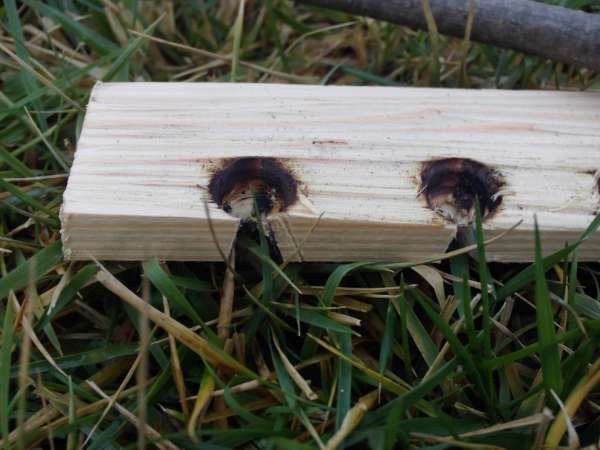
Assistance with manual rubbing of wood
When manually „drilling“, our hands slide downwards. We can prevent this in a simple way. With the help of strings with eyelets at the ends, into which we thread our thumbs, we prevent hands from sliding down.
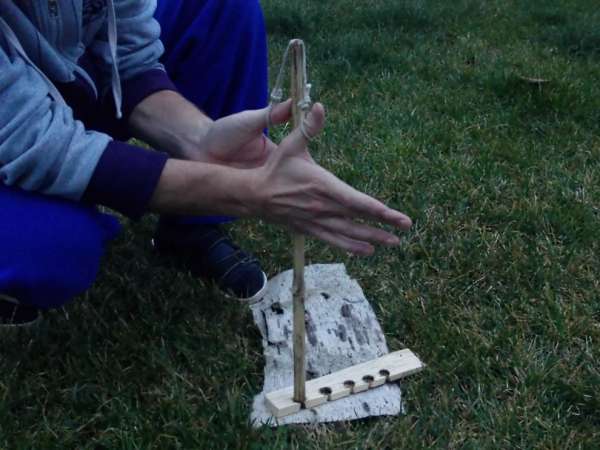
LENTIL
The technique of starting a fire with a lens can be useful if the sun is shining (but we can replace the sun with a very strong flashlight with a halogen bulb, no flashlight with LEDs worked for me). Surely, as a child, you tried to light something with a magnifying glass. – ** Magnifier **: We have to direct the magnifier so that the rays of the sun pass through the magnifier and create a round shape of the ray on the trumpet. By moving the zoom out or closer, we try to create the smallest possible wheel of light beam on the oven. The smaller the beam wheel, the higher the temperature, which causes the oven to smolder, which is then gently blown out and the flame ignites. – ** Glasses **: Prescription glasses also work on the same principle as a magnifier. – ** PET bottle **: If we have a PET bottle (but it must have at least part of the body in a round shape), we can completely fill it with water and create a lens that works just like a magnifier. However, the PET bottle must be transparent and the water also as clean as possible. – ** Condom, plastic bag **: In the same way as for a PET bottle, we can fill a condom or a plastic bag with water (again, we have to turn the ends to create a ball). – ** Bulb **: The bulb also has an ideal shape. After removing the inside and filling it with clean water, it works absolutely great (be careful when disassembling, it can crack in your hand and cut you !!!). But hand on heart. Who among us pulls a light bulb in a backpack in case he has to start a fire …
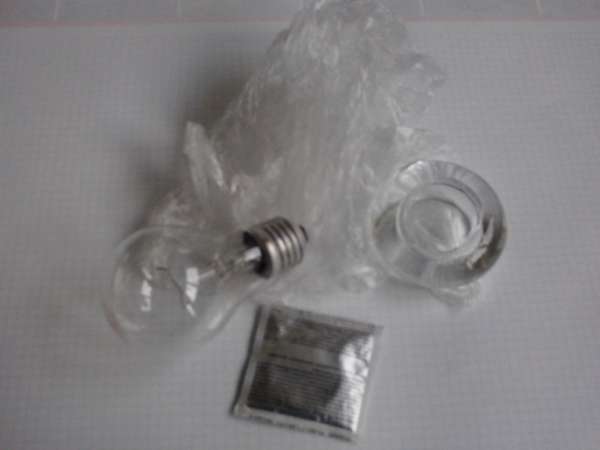
POWER SUPPLY
Probably every traveler will find a battery in his backpack. It doesn't really matter. It can be a battery from a flashlight, mobile phone, navigation, camera, etc. If you travel by car, you can use car batteries to start a fire. If the battery can ignite the filament in the light bulb or turn on the cell phone, why can't it also ignite the trunk? – ** Car battery **: Jumper cables are best suited to ignite a car battery fire. All you have to do is connect them to the car battery (usually red on + and black on -), cross out about yourself and you have a spark with which you can light a trunk. If you do not have jump leads directly, try any conductive wires. You can also use a wheel wrench to connect the two poles on the car battery (place the wrench on + and then cross out by -). Never connect the two poles of the car battery for a long time, always just strike it out briefly (!!!!! CAUTION !!!!! it can damage the battery and even explode it !!! PERFORM ONLY IN EMERGENCY SITUATIONS). – ** Classic batteries and batteries from appliances **: With this variant of starting a fire, you will only need two things. A battery and a piece of foil or other metal foil (silver packaging from chewing gum, silver inside from a box of cigarettes, tinfoil from chocolate …). We cut a strip of metal foil of such a length that it reaches from the positive pole of the battery to the negative. Then fold the strip of foil in half and cut it out in such a way as to narrow the middle of the strip as much as possible (see the introductory photo of the chapter). When we then use this strip to connect both poles of the battery, the narrowed center of the strip begins to heat up to a temperature that is enough to ignite the oven. But if we have a strip from a cigarette box, for example, there is already paper on one side, so a few moments after connecting the two poles of the battery will ignite (it is quite a quick process, so have a ready ready to transfer the flame from the paper) . If you have a stronger battery than, for example, a pencil battery (1.5 V), you can start a fire with steel wool (it can be bought almost anywhere, it is mainly used for cleaning). All you need is a mobile phone battery or a 9V battery. Again, all you have to do is connect the positive and negative poles of the battery with steel wool. You will then see a lot of hot sparks on the steel wool, from which you can easily light the trunk.

CHEMICAL REACTION
We can also start a fire by a chemical reaction. There are definitely many chemical reactions that release heat. But I will only deal with one chemical compound and that is Hypermangan, because it is easily available in every pharmacy. – ** Hypermanganese **: or potassium permanganate (KMnO4), are small violet-black crystals. I personally have it in a travel first aid kit because it has antiseptic effects. You can use it (after dissolving in a certain proportion of water) to disinfect the abrasions on the skin. But how to start a fire with Hypermangan? In addition to Hypermangan, you will also need plain sugar. Carefully mix the Hypermangan and Sugar Crystals in a half-to-half ratio. Then, for example, start to crush this mixture strongly with a stone or a stick. Due to the stronger friction of this mixture, a chemical reaction occurs and the result is the ignition of the flame. Then all you have to do is apply the trunk and the fire is in the world. Another way to start a fire with Hypermangan is by a chemical reaction with Glycerin. Glycerin is part of antifreeze mixtures. If you stay somewhere „hanging“ with a broken car, a little Fridex from the car may be useful to light a fire. Pour about one teaspoon of Hypermangan somewhere on the cup and drip 1 – 2 drops of Glycerin. For a moment nothing obvious will happen, but after a few seconds a chemical reaction will occur, during which a flame will ignite. Then just attach the trunk and you have a fire … – ** Cartridges **: Another way to start a fire is to use a cartridge or cartridge. I've been wondering for a long time if I should publish this variant at all. Manipulating a sharp charge is quite a gamble with life. Therefore, I decided to only outline this variant. I hope that you are sensible people and will not try this variant in a „trial and error“ style (you no longer have to experience the second attempt) and in case of urge you will ask for the advice of an experienced weapon and ammunition expert to explain it to you in detail. So, in short: The cartridge case contains, in addition to the projectile and the powder charge, also a match, which has the task of igniting the powder charge of the cartridge case and thus the projectile is fired. Therefore, when a match can ignite the powder charge inside the cartridge case, it can also ignite the stump. I will not publish the exact procedure here. I personally tried this variant, but only under the supervision of a professional in ammunition and firearms. For me, this variant of starting a fire is just such a rarity and the last way to start a fire.

TRANSFER OF FIRE
So that we don't have to start a new fire every time we move, we can simply take it with us. Before we can start a fire in an emergency, it sometimes takes a lot of work and takes away a lot of valuable energy that we might need later. One way to alleviate this situation is to transfer an already lit fire or hot coals. – ** Wood-destroying fungi **: Wood-destroying fungi (various species of Choroš, Troudnatce, etc.) are excellent for this method of carrying fire. They grow mainly on dead tree trunks and trees affected by rot. We will make a hole in Troudnatka with a knife, into which we will insert a piece of hot carbon. The sponge will not burn with any flame, but will only smolder for a long time. Depending on the size of the mushroom, it can smolder for several hours. It is always enough to place the trunk on the hot spot in the sponge and blow it out. – ** Natural mat **: Another way to transfer hot coals is to make fresh branches a simple structure that you lay with fresh leaves. You will get something like a mat or a tray. Place a sufficient layer of clay or sand on this pad to prevent the pad from burning or igniting. You can then put hot embers in a layer of clay or sand to transfer them to another location. It's harder to hold, but sometimes it's a better option than starting a new fire again.
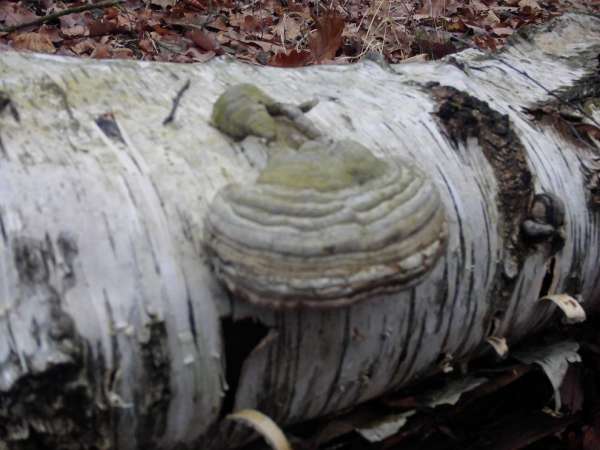
Wood-destroying fungus
This is what a wood-destroying fungus looks like after two hours of smoldering …
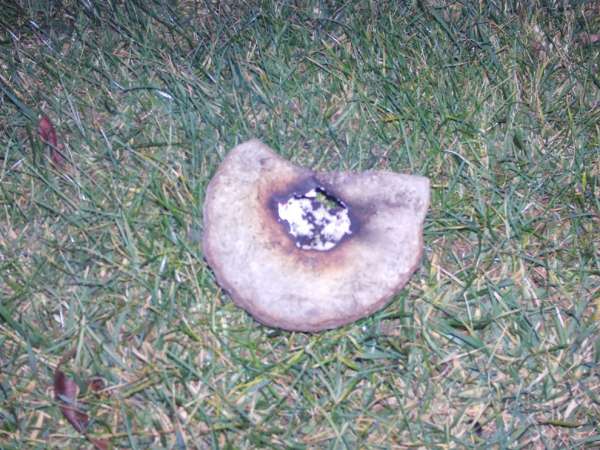
It is good to practice the fire in advance and master the techniques. Many techniques are not as simple as they seem at first glance. In addition, you can add stress and nervousness, which will (more or less) accompany you in an emergency.
Extensive fires over the territory of Portugal
At the end of this chapter, I would like to draw attention to the increased risk of fires during the creation and handling of fire. Always pay attention to safety. Do not start a fire where it can spread uncontrollably. The old familiar motto „Fire is a good servant, but an evil lord“ applies. The current major fires were in Portugal and California.
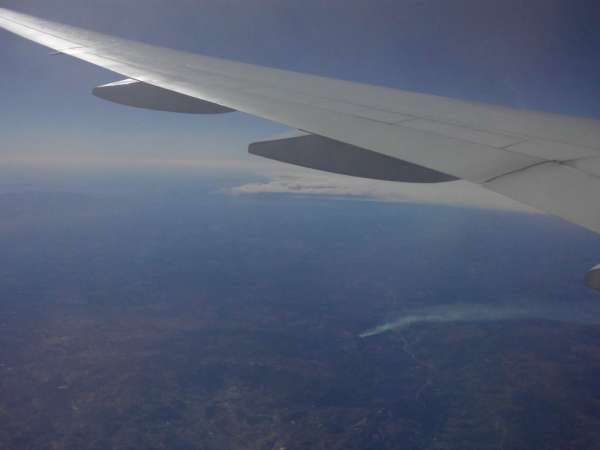
In the next article we will say something about water and dehydration …






